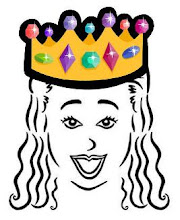 A short walk away from the Houses of Parliament on the edge of St James’s Park, the Churchill Museum and Cabinet War rooms are hidden beneath Clive Steps. These underground rooms were the epicentre for the British war effort between 1939 and 1945. The War Cabinet, Winston Churchill (the British Prime Minister), and his most senior advisors plotted the war here and were protected from German bomb attacks on London throughout the Second World War.
A short walk away from the Houses of Parliament on the edge of St James’s Park, the Churchill Museum and Cabinet War rooms are hidden beneath Clive Steps. These underground rooms were the epicentre for the British war effort between 1939 and 1945. The War Cabinet, Winston Churchill (the British Prime Minister), and his most senior advisors plotted the war here and were protected from German bomb attacks on London throughout the Second World War.
I wasn’t entirely sure what to expect from the Cabinet War Rooms but assumed it would amount to little more than a few reconstructed offices decked out with wartime furnishings! How wrong I was! The bunker style entrance immediately provokes the notion that this is not just a homage to Churchill – it is the genuine and faithfully preserved British control centre of the Second World War.
Opened to the public in 1984 with additional rooms opened in 2003, the Cabinet War Rooms are run by the Imperial War Museum and the Churchill Museum followed in 2005. There is so much I could write about this underground complex as it is a fascinating labyrinth of offices, bedrooms, dining and conference rooms. The fact that the whole place was kept secret from the nation and, most importantly, Hitler, makes it all the more amazing.
The War Cabinet Room itself is exactly as it would have been during the war. (Unfortunately my photos are not great as the room is protected by a glass front but they can all be seen on my flickr page). Even further below ground in the sub-basement is the “dock” which can’t be accessed by the public but c
 ontained the sleeping quarters for junior staff. Cramped conditions, low ceilings, vermin, insects, noise and bright lighting hardly encouraged people to take advantage of the facilities. Many staff decided the blitz was worth the risk rather than staying in accommodation that did not even boast a flushing toilet!
ontained the sleeping quarters for junior staff. Cramped conditions, low ceilings, vermin, insects, noise and bright lighting hardly encouraged people to take advantage of the facilities. Many staff decided the blitz was worth the risk rather than staying in accommodation that did not even boast a flushing toilet!All the doors in the network of rooms are numbered and it is room 63 which contained the biggest secret of all. From the outside, it appears to be a toilet and most staff believed it was the only flushing toilet in the basement and not available for their use. But Room 63 was, in fact, the transatlantic telephone “hot-line” room where Churchill was able to speak to the US President without fear of phone tapping from the enemy.

Although there is little evidence of luxury, the sleeping facilities for senior staff were surprisingly homely. Mrs Churchill had her own bedroom (right) close to the Prime Minister’s detectives and military advisor. The Prime Minister’s bedroom-cum-office (below right) contained
 a large desk, a single bed and a supply of his trademark cigars (how did he get these during the war?). There was also a private dining room (left) which was serviced by a specially installed kitchen. Despite all these living facilities, it is believed that Churchill only spent 3 nights sleeping here and preferred to sleep in his Downing Street quarters or watch the bombings from the roof of the building (nobody could accuse that man of cowardice!).
a large desk, a single bed and a supply of his trademark cigars (how did he get these during the war?). There was also a private dining room (left) which was serviced by a specially installed kitchen. Despite all these living facilities, it is believed that Churchill only spent 3 nights sleeping here and preferred to sleep in his Downing Street quarters or watch the bombings from the roof of the building (nobody could accuse that man of cowardice!).
Among the offices, typing pools and map rooms is the BBC radio broadcasting room from where Churchill addressed the nation periodically. A network of colour coded telephones can be seen in all the offices and original maps plotting the war effort are on practically every wall. The main map room (among others) became defunct when war ended in 1945 and was not touched or seen again until the 1970s. Everything is now exactly as it was left more than sixty years ago down to the very last drawing pin! When the map room was uncovered, an envelope was found hidden in a desk drawer with a name on the front and some sugar lumps inside - with rationing in place, this was clearly one item that was particularly precious to its owner!

To walk around the Cabinet War Rooms, knowing that one of the greatest Britons of the 20th Century had walked along those same corridors is surprisingly emotive. Knowing that the majority of what you see is original and has remained in situ, untouched, for all these years makes the experience an even better one. Whatever your nationality, age or sex this is one London landmark that should be seen and appreciated by every visitor to London. Sir Winston Churchill once said “Broadly speaking, the short words are the best”; so GO SEE IT!
The Churchill Museum and Cabinet War Rooms are open daily from 9.30am-6pm
Adult entry fee: £12
Senior Citizens/Students: £9.50
London Pass holders can enter without further payment and receive a free audio guide.
Sound guides are available in eight languages.


No comments:
Post a Comment